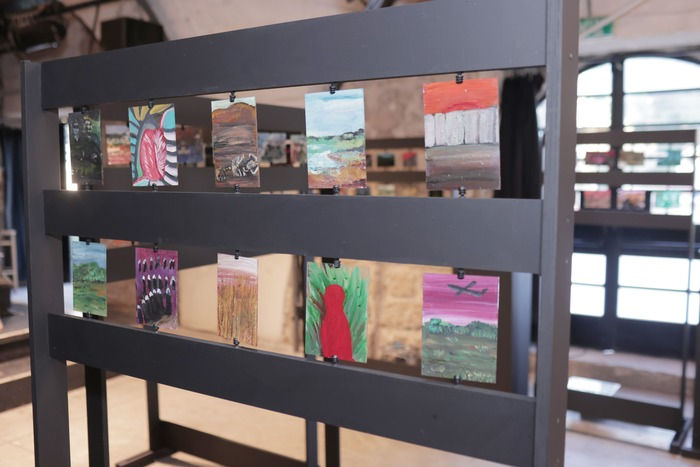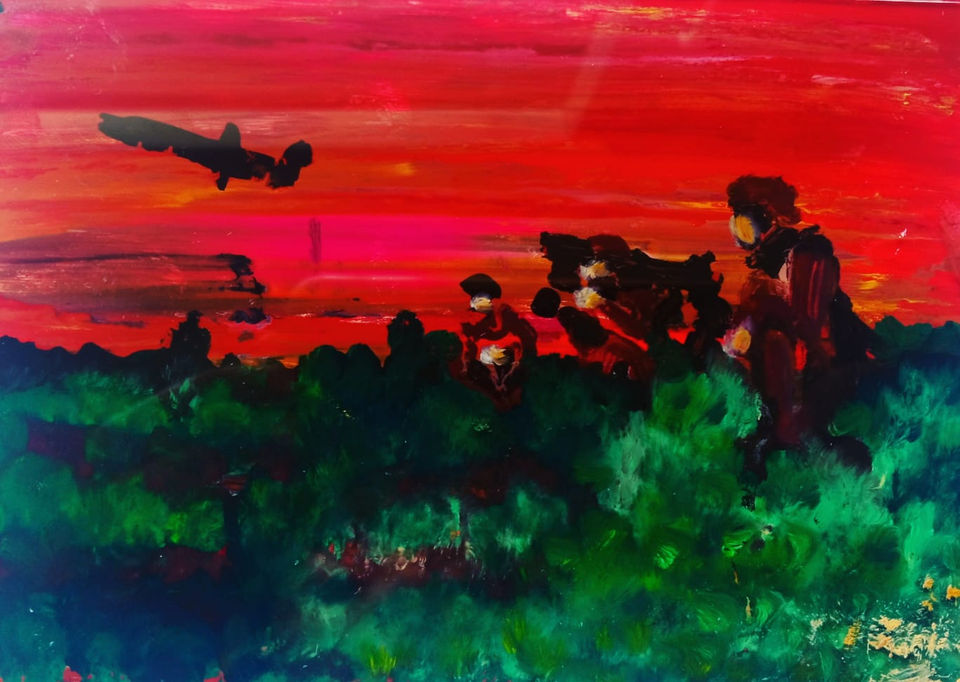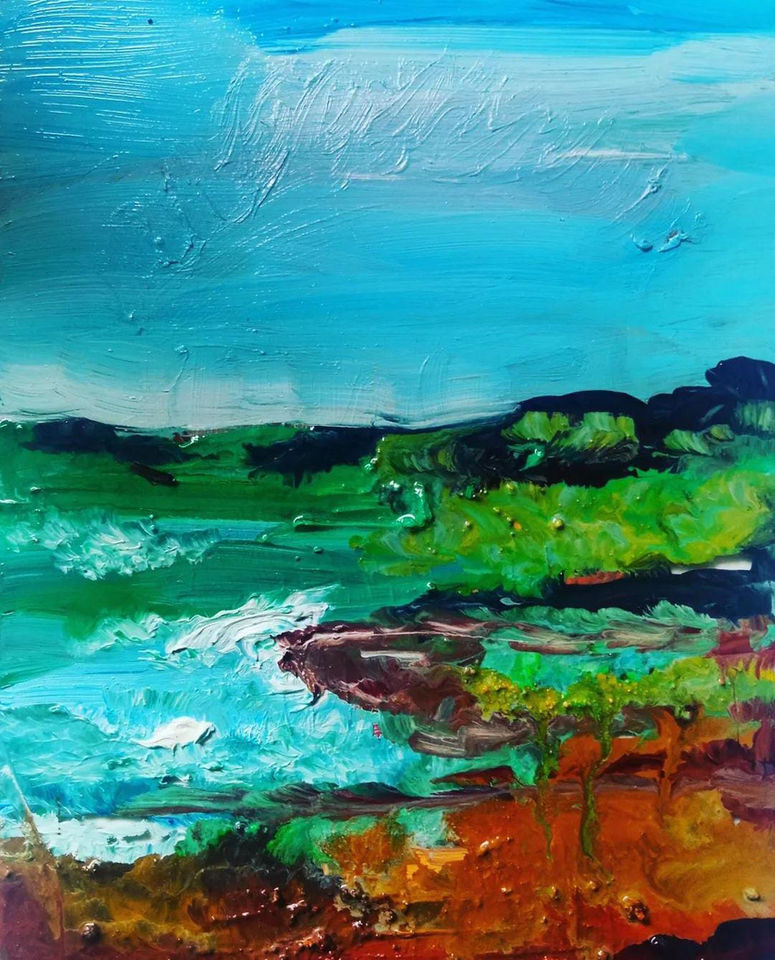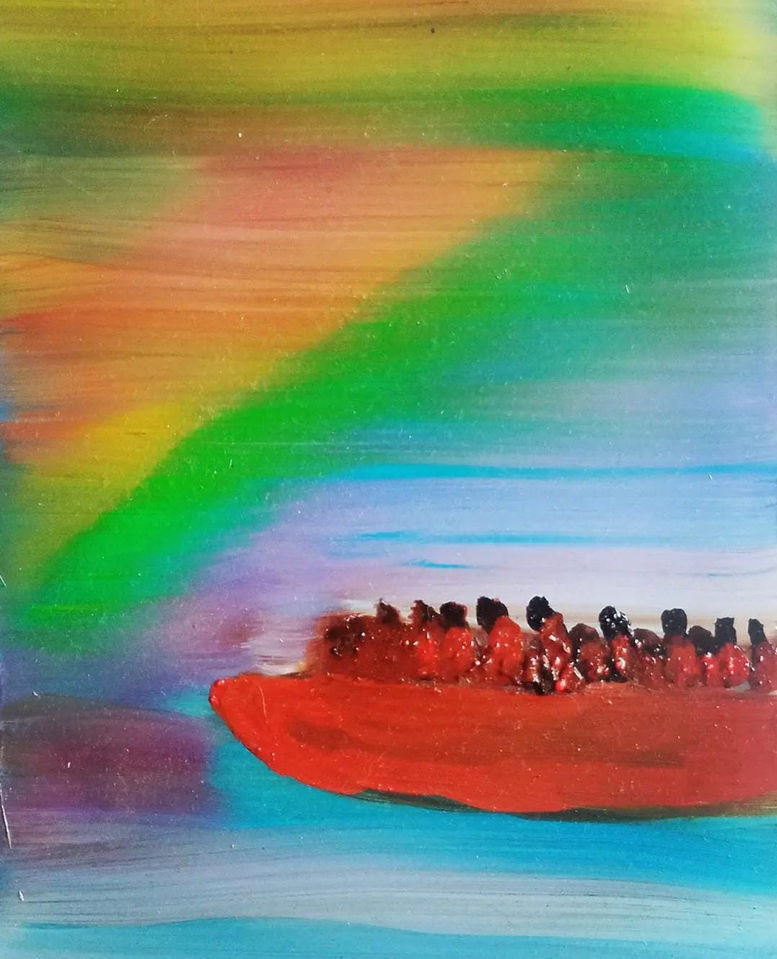
Doppelganger is a multidisciplinary exhibition by artist Jessica Sharon, featuring an installation of paintings on glass and objects combined with a theatrical performance.
The exhibition explores the civil-military dictatorship in Argentina from 1976 to 1983, inviting viewers to examine the manipulation of historical memory and artistic representation while simultaneously echoing contemporary social and political realities.
From curator Gilad Ophir:
"The exhibition Doppelganger merges contemporary culture and art, blending everyday events as reflected in images that catch Jessica Sharon’s eye in newspapers, with memories from her childhood during Argentina’s dictatorship. Her paintings, often small, almost like jewelry, carry a weighty presence, charged with the cruelty of humanity or depicting men and women who were abducted and tortured by an oppressive regime. At times, they portray landscapes, yet one can never fully trust these landscapes—for they may conceal the skeletons of those thrown to their deaths from planes at night, disappearing into the horrors of that dark era."
Doppelganger - The Monologs
"Doppelgänger" is a theatrical performance that is part of an exhibition of the same name, which also includes paintings and installations. Through a series of eight monologues, artist Jessica Sharon delves into the depths of memory and historical identity in the context of Argentina’s civil-military dictatorship from 1976 to 1983. The monologues present different perspectives on the stories of children who disappeared, were raised by their captors, and their struggle to discover their true identities in a nation marked by terror and repression. One of the most striking monologues is the testimony of a dictator, inspired by Adolfo Scilingo, who coldly recounts how he threw 30 people from airplanes during the military dictatorship. This character embodies the brutality of the regime and its lasting impact on the lives of Argentina’s citizens. The dramatic conclusion of the monologues is led by Juan, whose parents were abducted during the dictatorship. Inspired by his personal story, Juan founded the group **"Hijos" (Children of the Disappeared)**, which continues to this day in its relentless search for children born in captivity during those dark years. The exhibition’s paintings and installations complement the theatrical narrative by highlighting the duality and contrasting realities reflected in the stories of the *desaparecidos*. These works invite the viewer to examine the manipulation of historical memory and artistic representation while simultaneously resonating with contemporary social and political realities. **"Doppelgänger"** seeks not only to give voice to those who were silenced but also to remember and confront the painful history that continues to echo within Argentine society and beyond.
Doppelganger - The Exhibition
The "Doppelgänger" exhibition took shape through a five-year creative process. It began with oil paintings on canvas and gradually evolved into paintings on small glass panels—initially on one side only and later on both sides. The result is a dual artwork: two different paintings on either side of the same working surface. To present these works in the exhibition, Jessica chose to mount the painted glass panels on special wooden stands that she built herself. These stands allow viewers to rotate the glass on its axis, revealing both paintings one after the other. Each stand holds a series of approximately ten paintings arranged in two rows. A total of eleven stands are positioned throughout the exhibition space, structuring it along its length. Alongside these stands and in parallel with the glass paintings, Jessica created Ready-made objects integrated with her paintings. These objects were sourced from an industrial production line in a technology factory and include aluminum parts, lenses, and tubes, evoking the appearance of laboratory manufacturing equipment.





























.jpeg)
